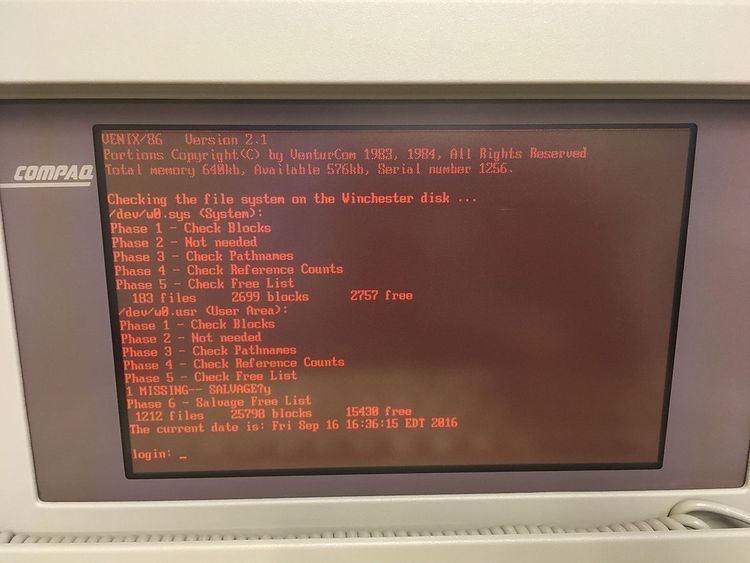Developer VenturCom Initial release 1983 | Working state Historic Latest release 4.2.1 / 1994 | |
 | ||
Venix is a discontinued version of the Unix operating system for low-end computers, developed by VenturCom, a "company that specialises in the skinniest implementations of Unix".
A working version of Venix for the IBM PC XT was demoed at Comdex in May 1983. It was based on Version 7 Unix with some enhancements from BSD (notably vi and csh) and custom inter-process communication mechanisms. In September 1984, Venix/86 Encore was released; it supported a number of early PC-compatibles, including the AT&T 6300, the Zenith 150, the (first) NCR PC, and the Texas Instruments Professional PC.
Venix Encore, which became Venix 2.0, was still based on Version 7 Unix, and ran on the DEC PRO-350 microcomputer (Venix/PRO), the DEC Rainbow 100 (Venix/86R) as well as PCs (Venix/86 and /286). The system contained a number of enhancements, notably tools to access MSDOS files directly on a DOS/FAT-partition and an updated ADB debugger. The system came in two flavors, a 2-user version priced at $800 and a 8-user version at $1,000. There were no technical differences between the two.
From version 3.0, Venix was based on System V. A real-time version based in System V.3.2 was released for the 386 in 1990.
The last version Venix 4.2.1 based on UNIX System V Release 4.2 (UnixWare) was released in 1994. The workstation system included the real-time operating system, NFS and TCP/IP networking, X, OpenLook and Motif GUIs and the Veritas journaling File System (vxfs). A development system included additionally an ANSI C compiler, a library of real-time functions, GUI development software, real-time development utilities, and selected industrial I/O device drivers.
Reception
PC Magazine in 1984, found Venix functional, despite some bugs in the initial versions. Its use of the BIOS for accessing devices made it more portable than its competitor PC/IX, but slowed down its display processing; the disk access speed was found to be similar. BYTE stated that Venix on the DEC Professional and IBM PC "performed adequately", but criticized its limit on background processeses.
